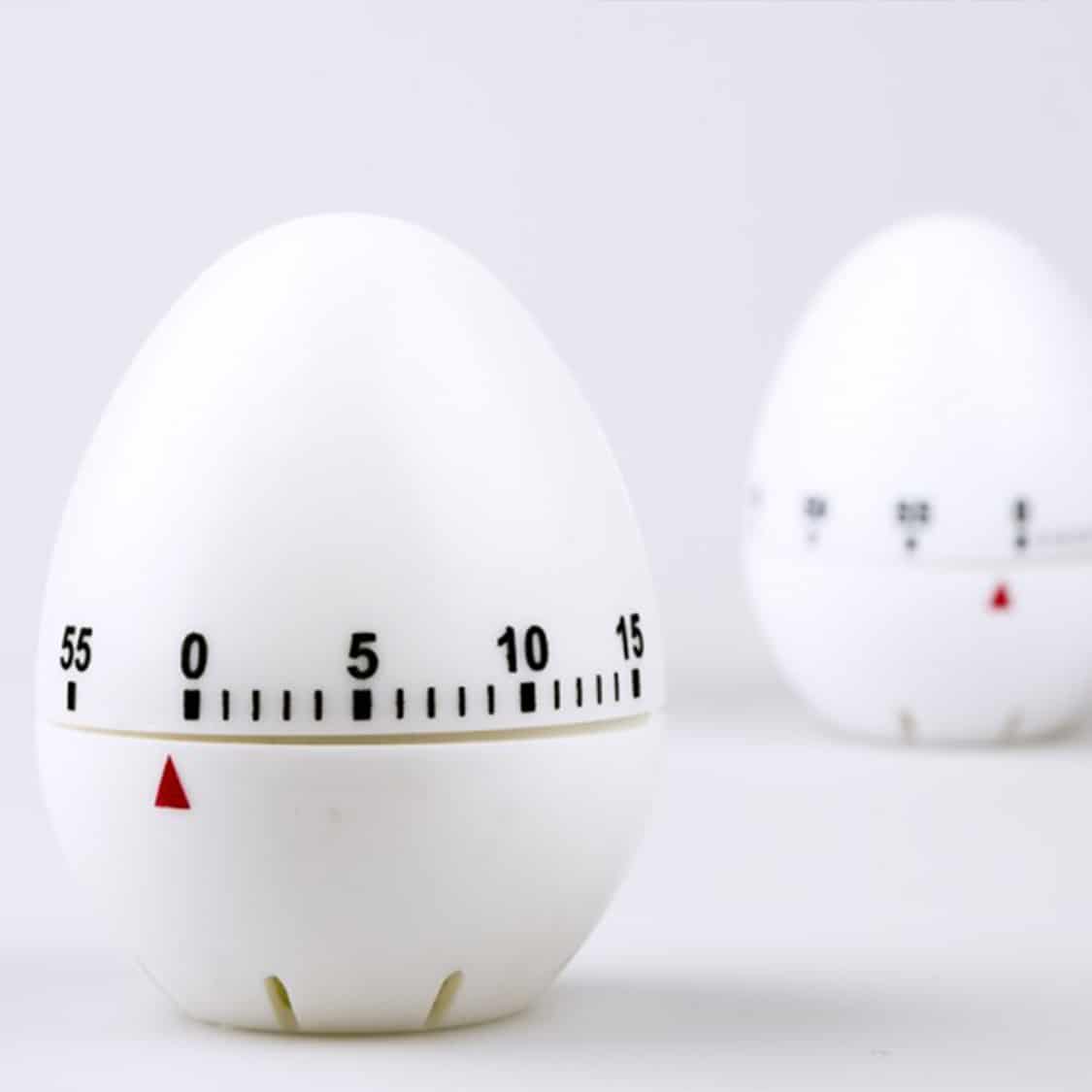

How can you tell when your eggs are done? Cook egg dishes according to the following guidelines for egg cooking time and indicators of doneness.
Scrambled Eggs, Omelets, Frittatas
The scrambled eggs are done when they are thickened and no visible liquid egg remains.
Fried Eggs – Over-Easy, Over-Hard and Basted
To cook both sides and increase the temperature the eggs reach, cook slowly and either baste the eggs, cover the pan with a lid or turn the eggs. Cook until the whites are completely set and the yolks begin to thicken but are not hard.
Poached Eggs
For classic poached eggs cooked gently in simmering water, cook until the whites are completely set and the yolks begin to thicken but are not hard, about 5 minutes. For steamed eggs cooked in ‘poaching’ inserts set above simmering water, cook until the whites are completely set and the yolks begin to thicken but are not hard, about 6 to 9 minutes. Avoid precooking and reheating poached eggs.
Hard Boiled Eggs
These will easily reach internal temperatures of more than 160° F when they are done. After cooking, cool hard-boiled eggs quickly under running cold water or in ice water. Refrigerate hard-boiled eggs in their shells promptly after cooling and use them with one week and if peeled, use them within one day.
Baked Custards, Quiches, Casseroles, French Toast, Stratas
Cook or bake until a thermometer inserted at the center shows 160° F or a knife inserted near the center comes out clean. You may find it difficult to tell if a knife shows uncooked egg or melted cheese in some casseroles and other combination dishes that are thick or heavy and contain cheese – lasagna, for example. To be sure these dishes are done, check to see that a thermometer at the center of the dish shows 160° F. Also use a thermometer to help guard against uneven cooking due to hot spots and inadequate cooking due to varying oven temperatures.
The knife test: Test for doneness with a thin-bladed knife. Insert knife about 1 inch from the center of a one-dish custard; midway between center and edge of cups. If knife is clean when pulled out, the custard is done. If any custard clings to the blade, bake a few minutes longer and test again.
Cheese fillings: Quiche fillings containing cheese may continue to test “wet” even after they are done, making the knife test unreliable. In this case, bake until the center appears almost set but still jiggles a bit when the dish is tapped or gently shaken.
Stirred Custards, Eggnog, Ice Cream Bases
Cook until thick enough to coat a metal spoon with a thin film and a thermometer shows 160° F or higher. After cooking, cool quickly by setting the pan in ice or cold water and stirring for a few minutes to prevent overcooking. Cover and refrigerate to chill thoroughly, at least 1 hour.
Pie Meringues
Bake a 3-egg-white meringue spread on a hot, fully cooked pie filling in a preheated 350° F oven until the meringue reaches 160° F, about 15 minutes. For meringues using more whites, bake at 325° F (or a lower temperature) until a thermometer registers 160° F, about 25 to 30 minutes (or more). The more egg whites, the lower the temperature and longer the time you need to cook the meringue through without excessive browning. Refrigerate meringue-topped pies until serving. Return leftovers to the refrigerator
